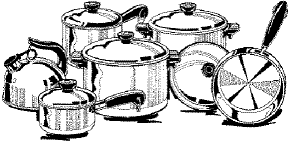THIS DOCUMENT IS PROVIDED "AS IS" WITHOUT WARRANTY OF ANY KIND,
EXPRESS OR IMPLIED. FURTHER, ACCESS DERRY, INC. DOES NOT WARRANT,
GUARANTEE, OR MAKE ANY REPRESENTATIONS REGARDING THE USE OF THE DOCUMENT
OR ANY STATEMENT THEREIN IN TERMS OF CORRECTNESS, ACCURACY, RELIABILITY,
CURRENTNESS, OR OTHERWISE. THE ENTIRE RISK AS TO THE RESULTS AND
PERFORMANCE OF THE TIPS IS ASSUMED BY THE USER. THE MAKING OF ANY IMPLIED
WARRANTY OF MERCHANTABILITY AND FITNESS FOR PARTICULAR PURPOSES ARE
DISCLAIMED.
NEITHER ACCESS DERRY, INC. NOR ANYONE ELSE WHO HAS BEEN
INVOLVED IN THE CREATION, PRODUCTION OR DELIVERY OF THIS DOCUMENT SHALL BE
LIABLE FOR ANY DIRECT, INDIRECT, CONSEQUENTIAL, OR INCIDENTAL DAMAGES
(INCLUDING DAMAGES FOR LOSS OF PROPERTY, LOSS OF BUSINESS PROFITS,
BUSINESS INTERRUPTION, AND THE LIKE) ARISING OUT OF THE USE OF SUCH
DOCUMENT.
NO ORAL OR WRITTEN INFORMATION OR ADVICE GIVEN BY ACCESS
DERRY, INC., ITS AGENTS OR EMPLOYEES OR THE AGENTS OR EMPLOYEES OF ANY
SELF STORAGE FACILITY SHALL CREATE A WARRANTY OR IN ANY WAY INCREASE THE
SCOPE OF THIS WARRANTY AND YOU MAY NOT RELY ON ANY SUCH INFORMATION OR
ADVICE.
COPYRIGHT 1998 ACCESS DERRY, INC. ALL RIGHTS
RESERVED.
|










